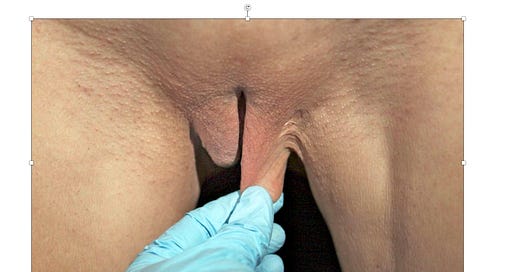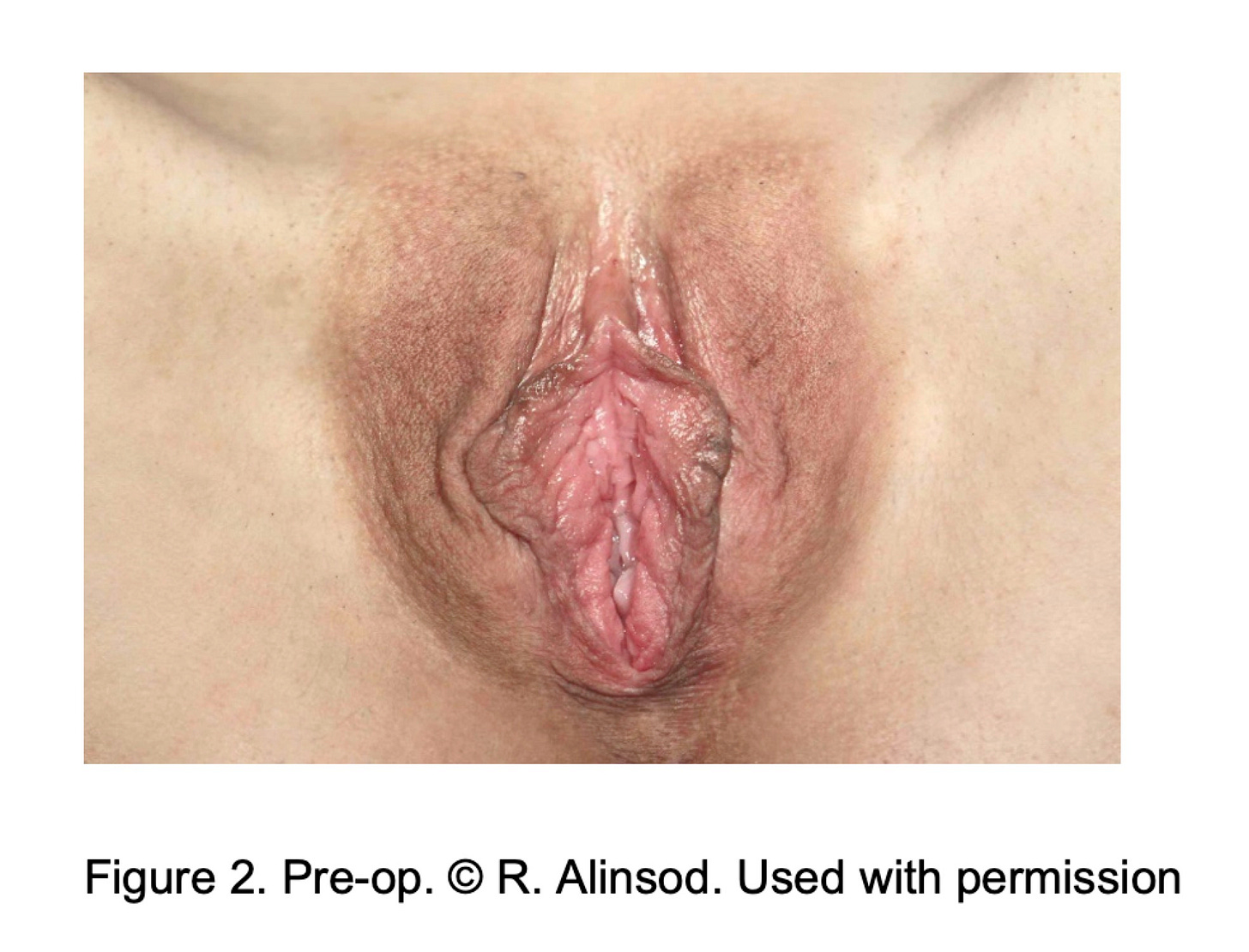Review of Curvilinear Labia Majoraplasty
How I do it. Originally for publication in 2014. Little has changed in my technique.
“How I Do It”
Curvilinear Labia Majoraplasty
Red Alinsod M.D.
Background
The labia majora, composed largely of fatty tissue, are bilateral structures of the vulva that extend from the bottom of the mons pubis to the rectum. Anatomical variation in the length and volume of the majora are normal and do not usually indicate a pathological condition. The length of the majora is 7.0 – 12.0 cm, with a mean measurement of 9.3 cm. Hereditary and environmental factors may contribute to individual variance in the size and shape of the labia majora. With a loss of volume the labia majora may become droopy or sagging with aging or after bariatric surgery. (Figure 1, 2) Excess fat deposits can enlarge the labia majora in patients who have experienced significant weight loss
A prominent or bulky majora may be problematic for some women, typically by causing an embarrassing bulging under pants, swimsuits, or tight fitting clothing. Prominent labia majora may lead to functional problems with sexual intercourse, poor hygiene, and physical discomfort in the genital region. Examples include bikers, horseback riders, and rowers who experience chronic vulvar rubbing. In addition, some women experienced lowered self-esteem due to the undesirable physical appearance of their majora. A common derogatory slang term for a hypertrophic and visually unappealing labia major is “Camel Toes.” There are several websites that unfairly highlight “Camel Toes” in young celebrities, which in reality are normal and healthy labia majora. Symptomatic labia majora issues that warrant medical attention are typically seen in the middle age to older women, but not in the 21-year old females.
Labia majoraplasty is a plastic surgical procedure to reduce the size of hypertrophic labia, usually to improve the aesthetic appearance of the vulval area. It involves removal of excess labia majora skin and prominent fat pads, and is akin to a modified radical vulvectomy but without excision of groin lymph nodes. This technique is used in rare instances to dramatically reduce the uncomfortable edema suffered in congenital lymphedema of the vulva. Labia reductions are typically performed on the labia minora and increasingly on the labia majora of the female baby boomer population in which aging often leads to sagging majora. Primary labia majora hypertrophy results from volume excess due to fat deposits, while secondary labia majora excess is caused by volume loss, leading to skin excess. Labia Majoraplasty, though less common than Labia Minoraplasty, is performed for either aesthetic or functional purposes, or both.
Surgical Technique
Keep reading with a 7-day free trial
Subscribe to Labiaplasty Newsletter to keep reading this post and get 7 days of free access to the full post archives.





